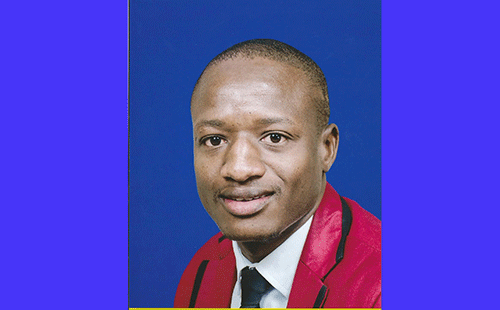Tuhafeni Mwandingi
The Ministry of Education, Arts and Culture passed a directive dated 25 February 2022, for schools to nullify any school rule that force learners to shave their heads in uniformity or banishes learners from school due to hairstyles. However, uniform is instituted in schools to foster an environment where learners look the same in all aspects at all times.
This is done mostly to make sure things outside the school setting does not influence the atmosphere inside the schools. The connotation of rich and poor, household relationships, community perceptions and peer pressure among others. This is the basis of instituting a uniform and hairstyles shouldn’t be of exception.
A uniform hairstyle is important because it prevent learners from noticing their differences as does the entire uniform and solely focus on their learning and modelling good discipline.
A uniform hairstyle, short hair for instance saves time, lotions/jells, water and no one can dispute that. That’s beneficial to the learners, parents, teachers and the ministry.
The time a learner would spend doing hair, worrying about lotions, shampoos, fashions and unsafe chemicals would have been time spent on learning.
Provisions made in acts, regulations and other policies of the ministry shouldn’t be taken as ‘cast in stone’ outlines because they are informed by research and research sampling procedures are never 100% inclusive due to factors such as population demographics, cultural diversities, economic aspects etc.
Thus they should be open to internal school policies, rules etc. to sustain cultures and serve communities well. This is why a ‘one size fits all’ kind of directive may not work in this scenario.
Therefore, schools that have used certain measures, rules and regulations for a governable school environment and have been proven to work over a considerable period of time must be allowed to do so, provided such rules were endorsed through relevant offices.
Some schools may have used rules and parents like them, it became a culture engraved in their system with the support of their stakeholders and the community at large.
Taking away their culture does not only frustrate the principal but the whole community. This begs the question, will the frustrated leadership and its community be required to account for poor performance? These cultures do not however only apply to ‘short hairstyle’ as referred to in this context but to any other cultures from learners’ appearances to teaching and learning methods.
Long hairstyles can also be allowed if that is what is viewed as a culture for a specific school if it satisfies its stakeholders, the community and should thus be included in their school rules.
The learners’ appearance issue should be dealt with on an individual school basis, else we may be breaking school cultures and that can’t be a good thing.
Schools are not also only teaching subject contents for best academic performances but instilling in learners a perspective that appreciates following rules and regulations not because they like them but because they benefit the masses.
A generation growing up only knowing how to do what they want will be a lost generation who will know nothing about compromising for the sake of others and that is supposed to be contrary to the principle of a democratic education system. Such a generation will find it difficult to keep up with employment standards.
What if you back your child not to cut hair today and be employed in a company that favours a certain hairstyle in future? I understand this directive came as a result of complaints from parents but how many are those parents, what are their names, what schools are their kids going to and are the rest of the parents of the said schools for that motion?
It is clear that there are schools abusing the hairstyle issue but those are the schools to deal with on an individual basis instead of affecting everyone.
Properly regulated hairstyles endorsed by parents with their school boards were not supposed to deprive learners of their right to education. No learner should be sent home due to a certain hairstyle but schools should be allowed to use other corrective measures. One would argue that other learners can have other neat hairstyles of their choice but won’t that defeat the purpose of uniform?
The question of whether long or different neat hairstyles affect performance and/or discipline shouldn’t also only be judged from one point of view.
Just because we have seen learners with long hairstyles do best academically does not mean it didn’t affect some learners within the same school setting. Some gifted learners can pull through regardless of the pressure from hair upkeep but what about those other learners? There won’t be evidence to prove that the same learner couldn’t have done better if it wasn’t for the hair too.
With due respect Hon. minister, schools are dealing with a lot already, indiscipline is spiking up in schools, alcohol and drug abuse, theft, poor performance etc.
Allow schools to implement endorsed school rules and regulations that work to the benefit of the masses. This will not only spare principals and their management additional stress but it will be an act of mirroring a better future, where our future generation understand that good performance is great but an act of obeying rules is key.
Best results will get you a job but the ability to keep up with codes of conduct will keep you there. We have a responsibility to teach them that and it is only fair that we do our best.
Let us protect those other poverty-ridden learners who cannot afford those other types of decent hairstyles from psychological trauma and those other parents struggling to maintain the uniform in general. We experienced how demanding it is to maintain certain hairstyles and know the effects of peer pressure.
Let’s move together, united in the Ubuntu spirit and let the principle of democratic rule where differences prevail. Thank you all. Peace.


